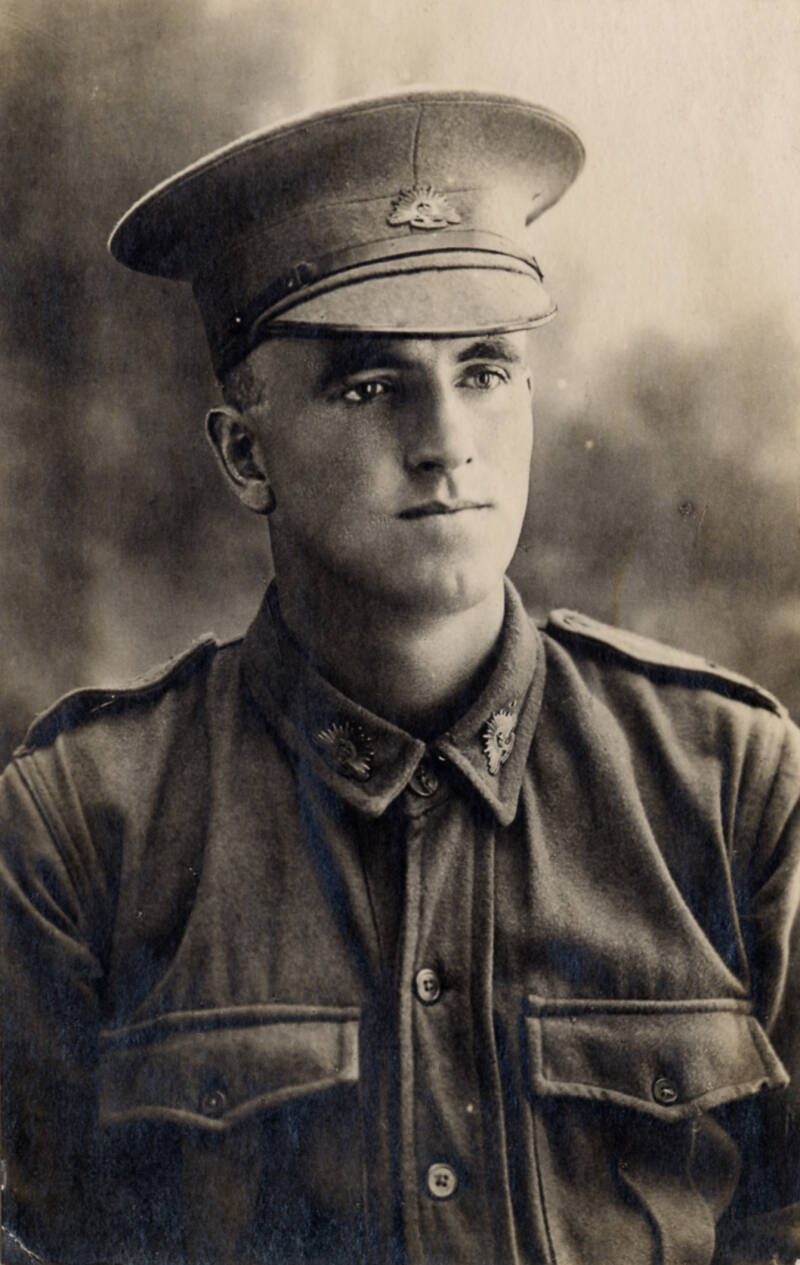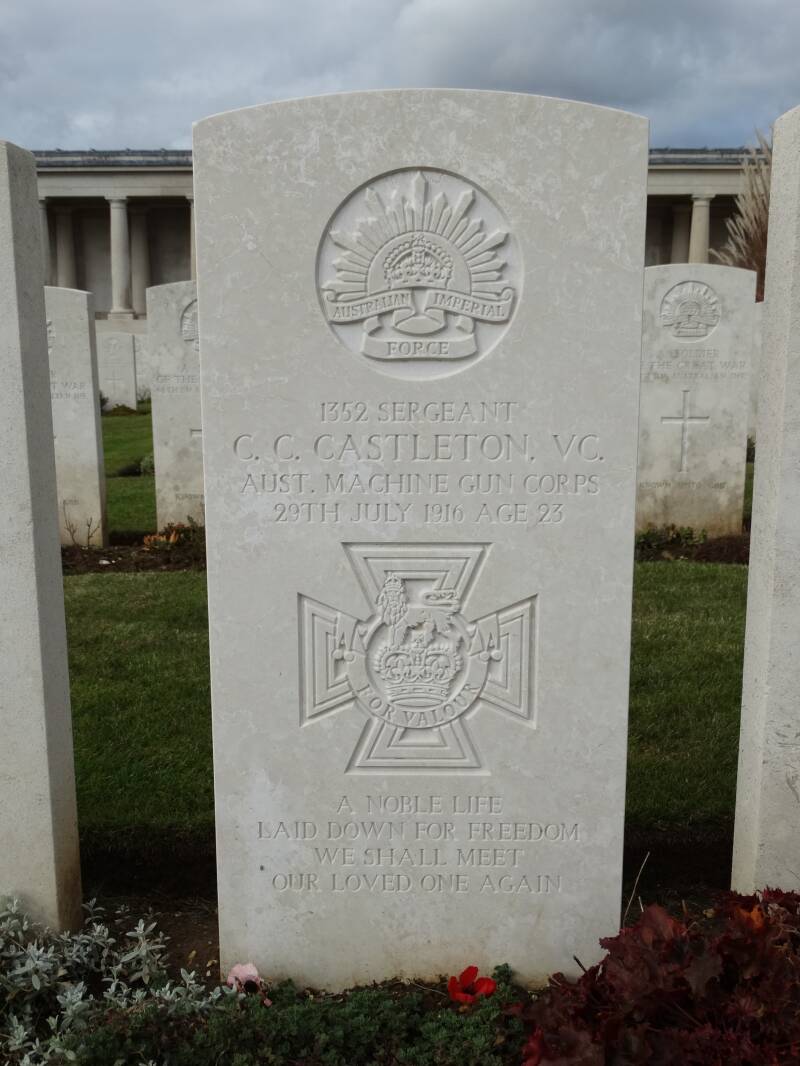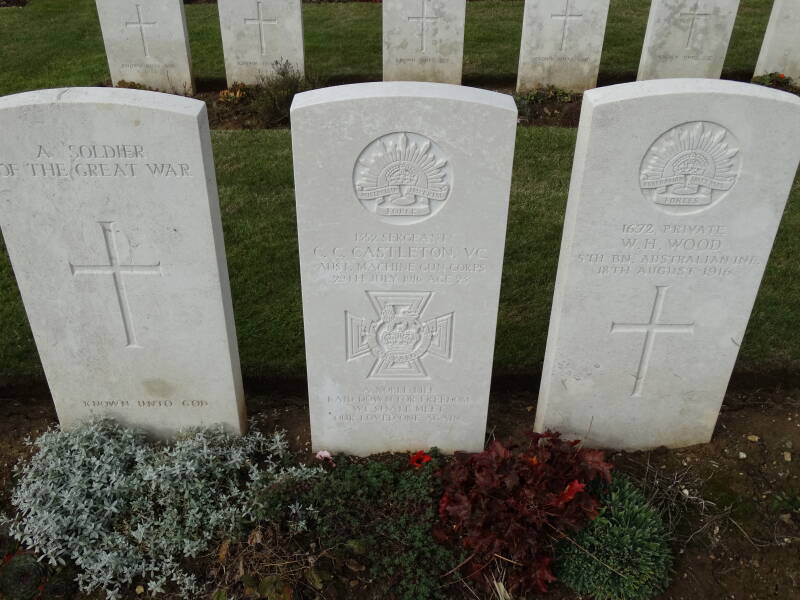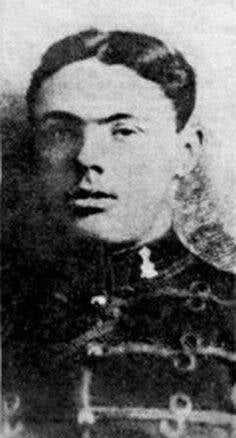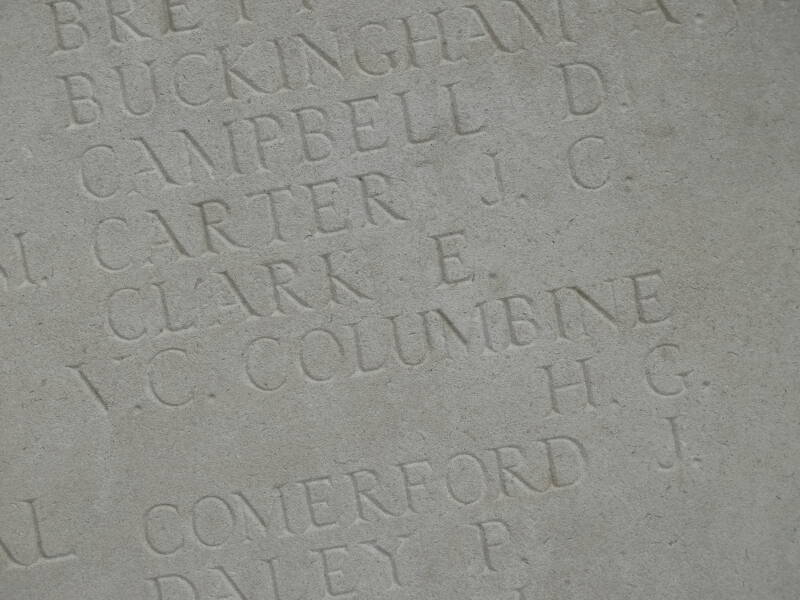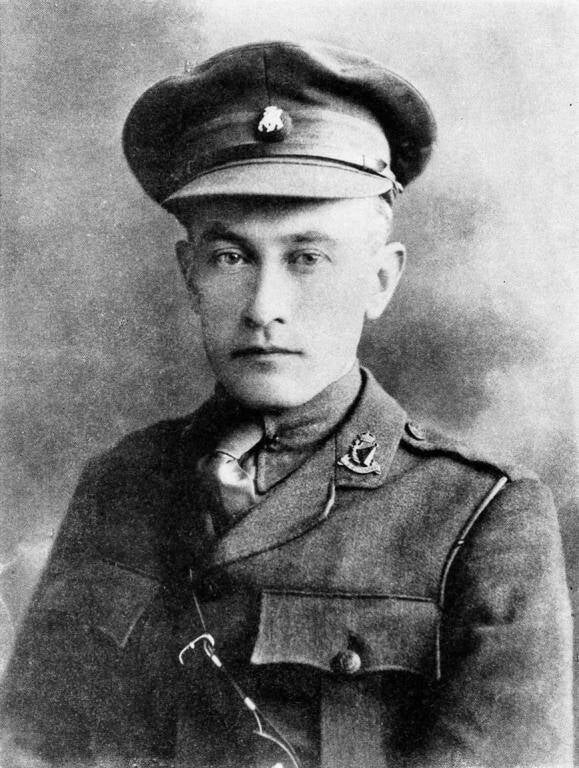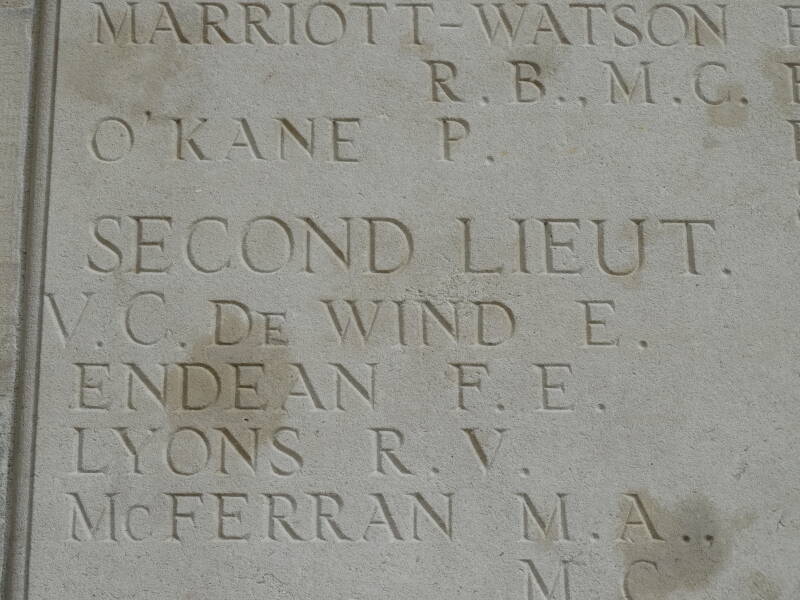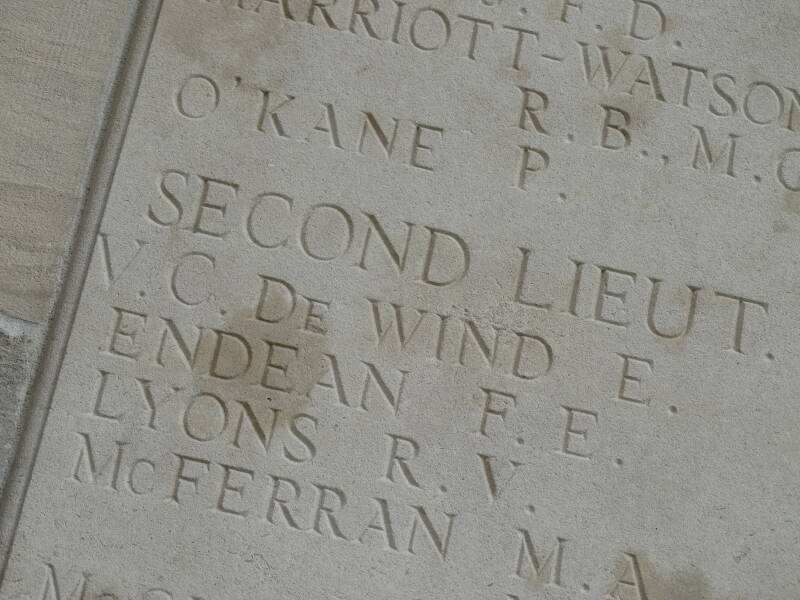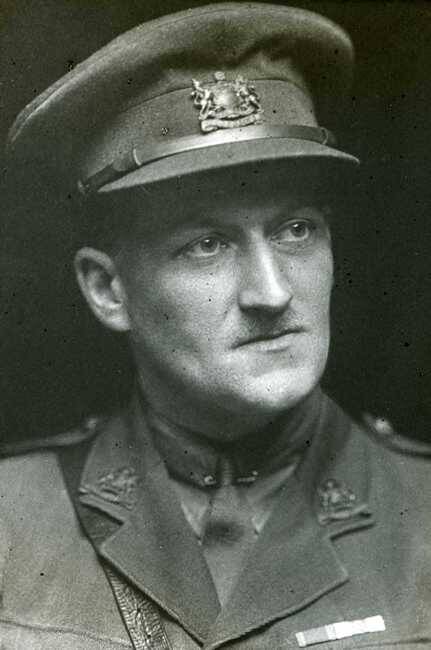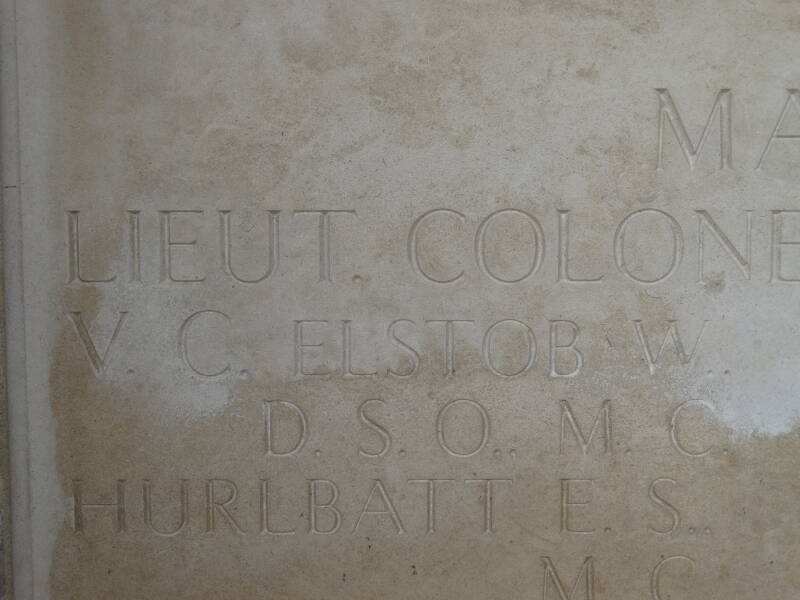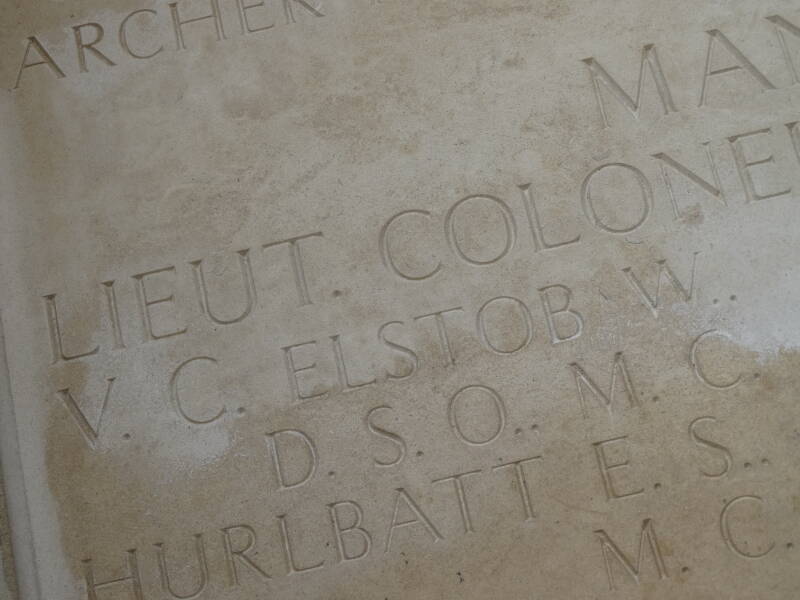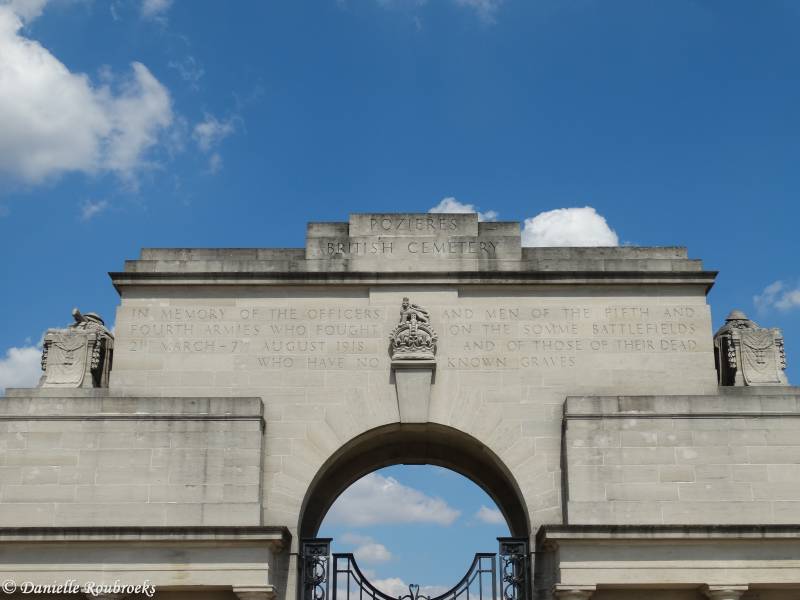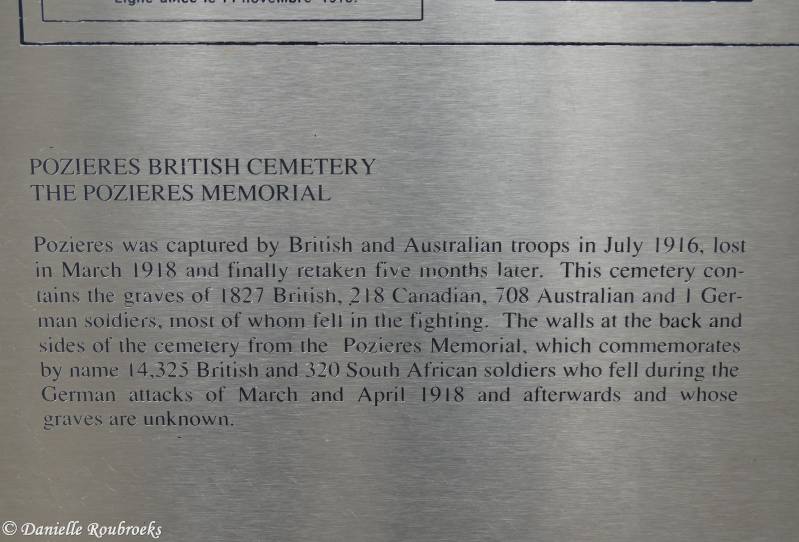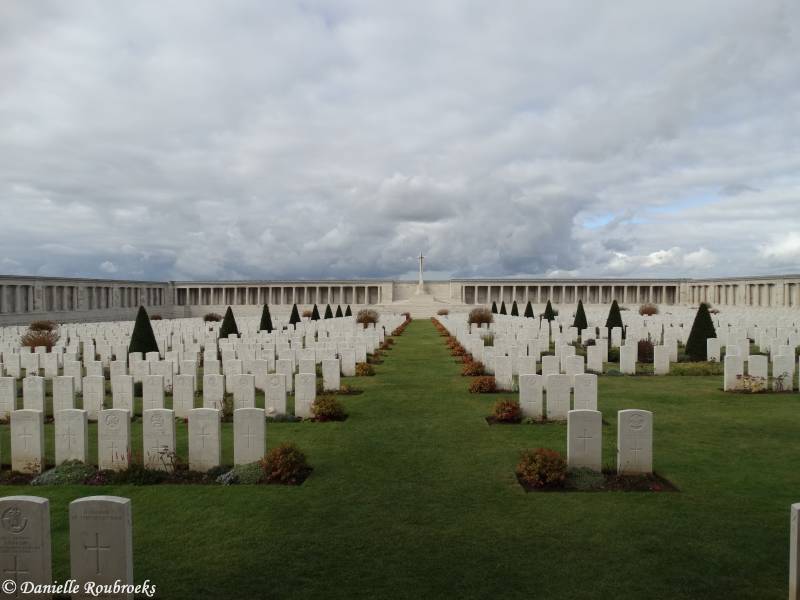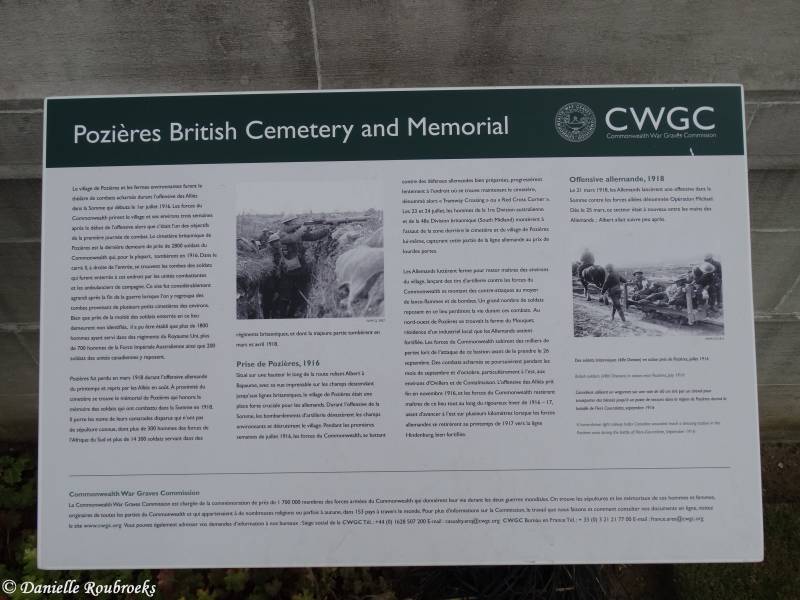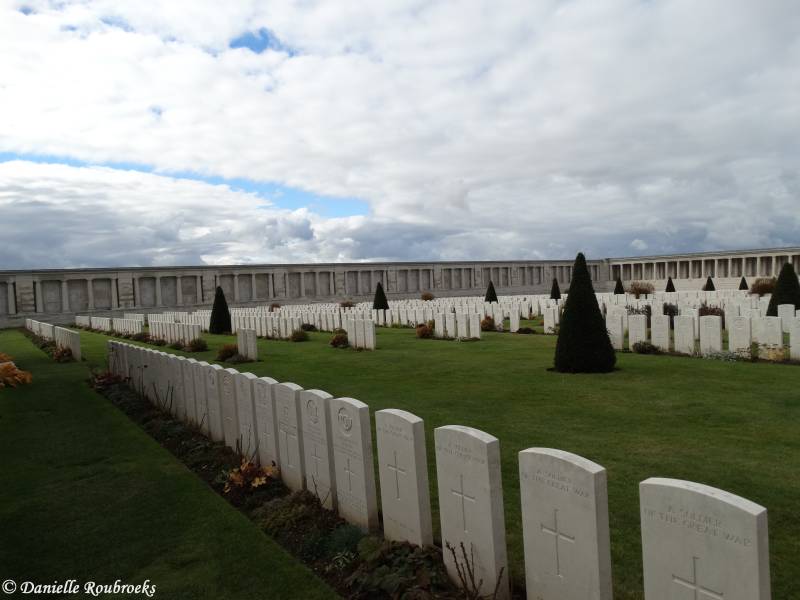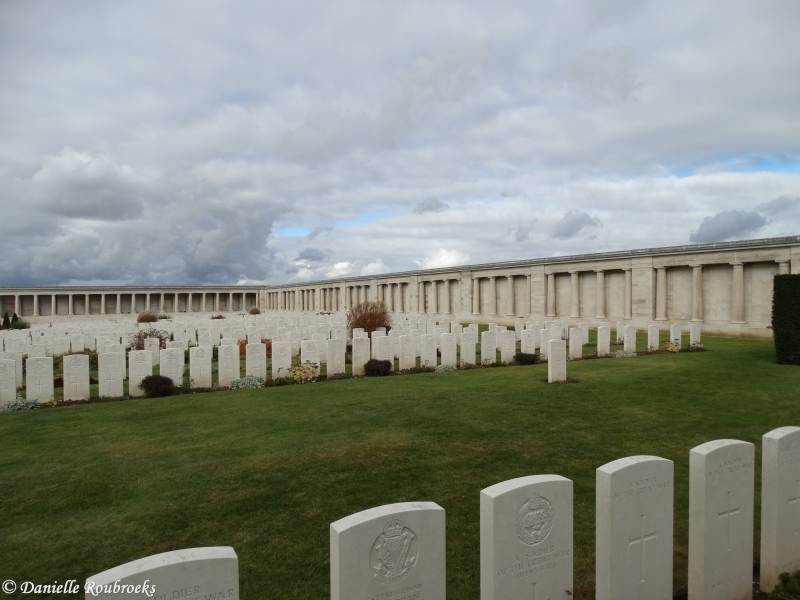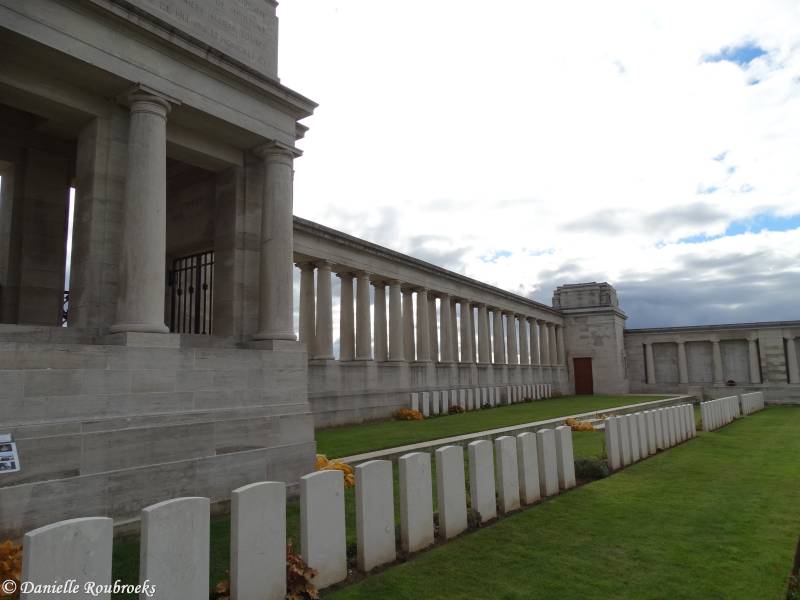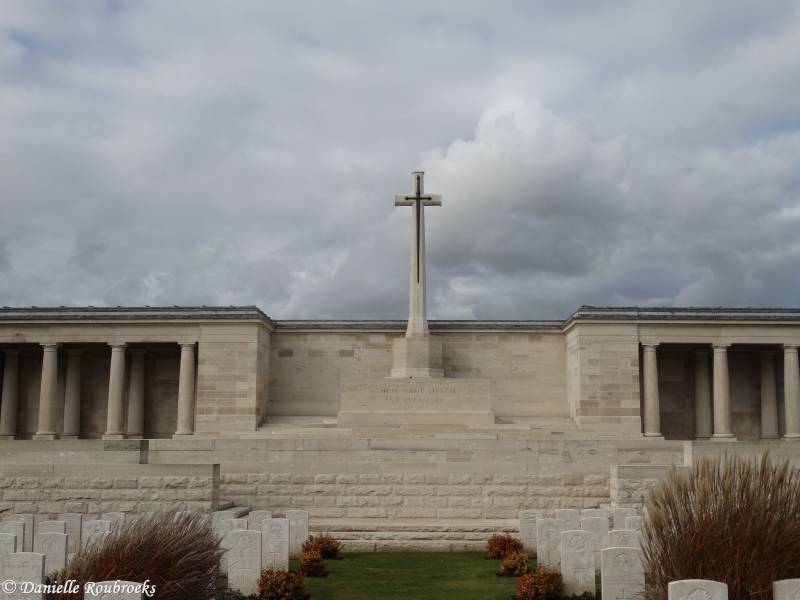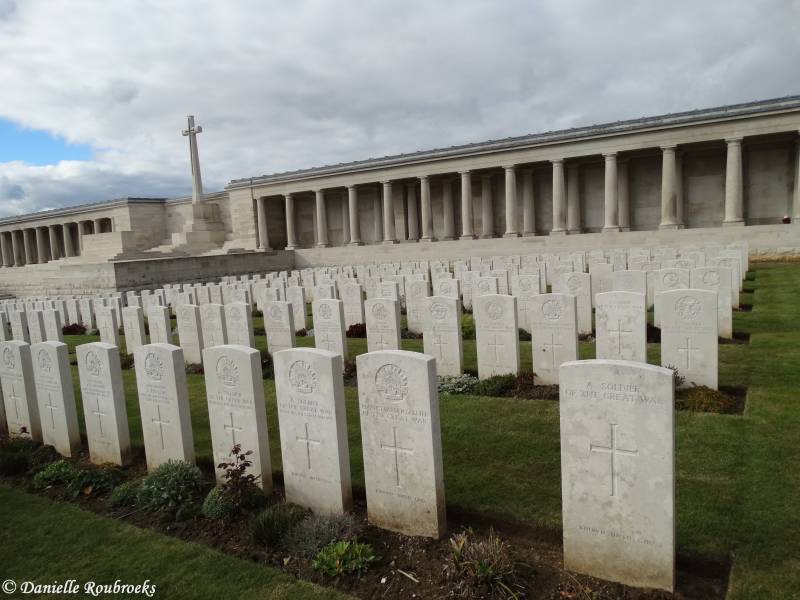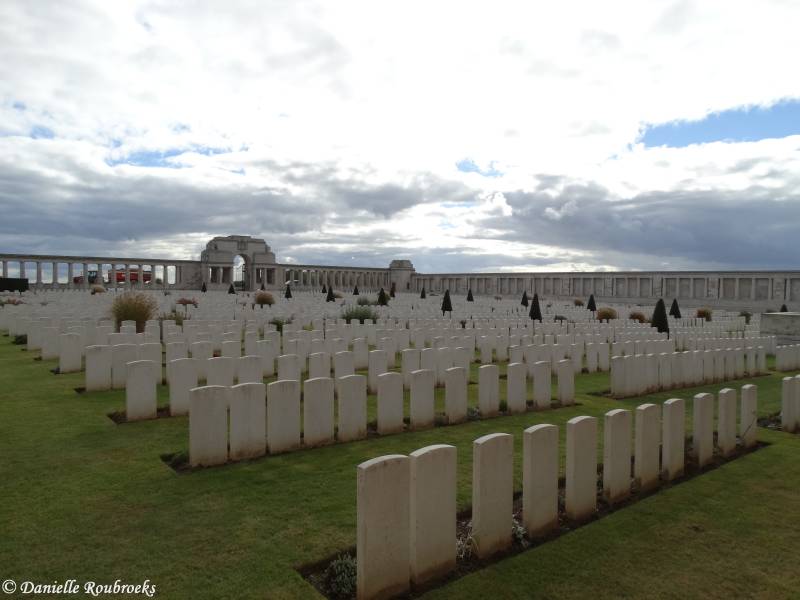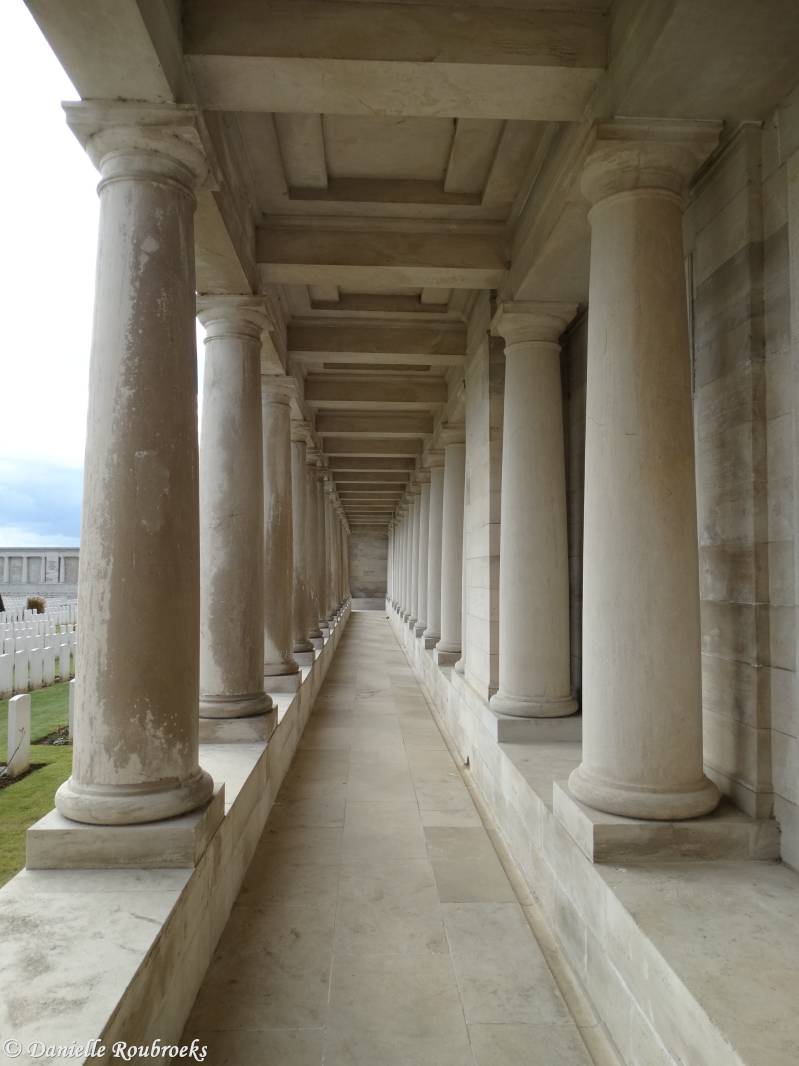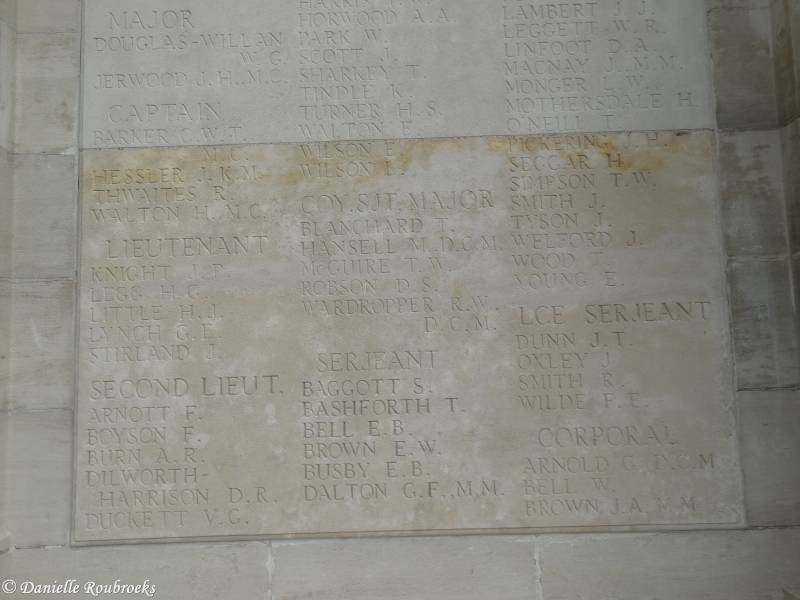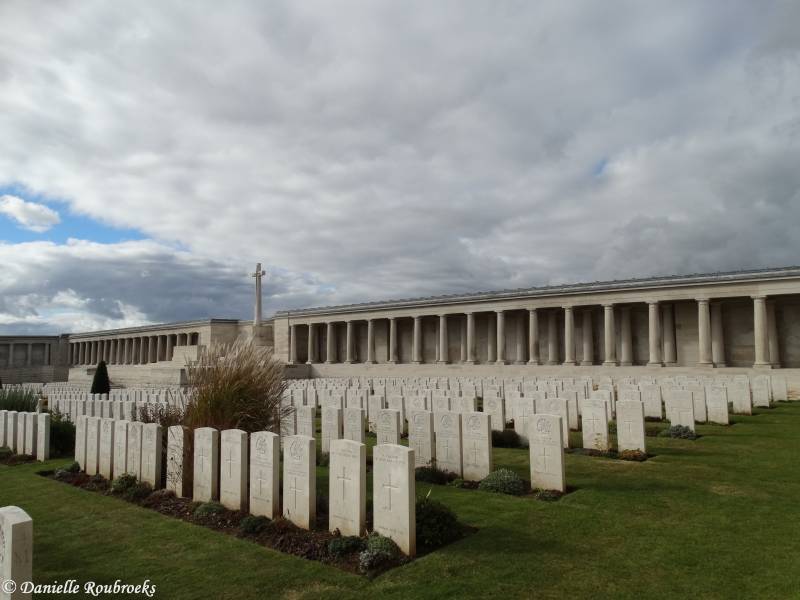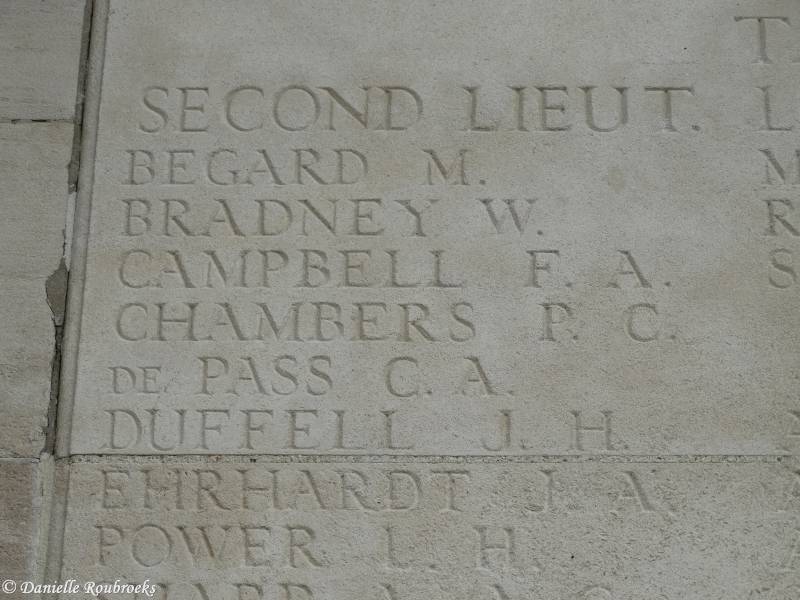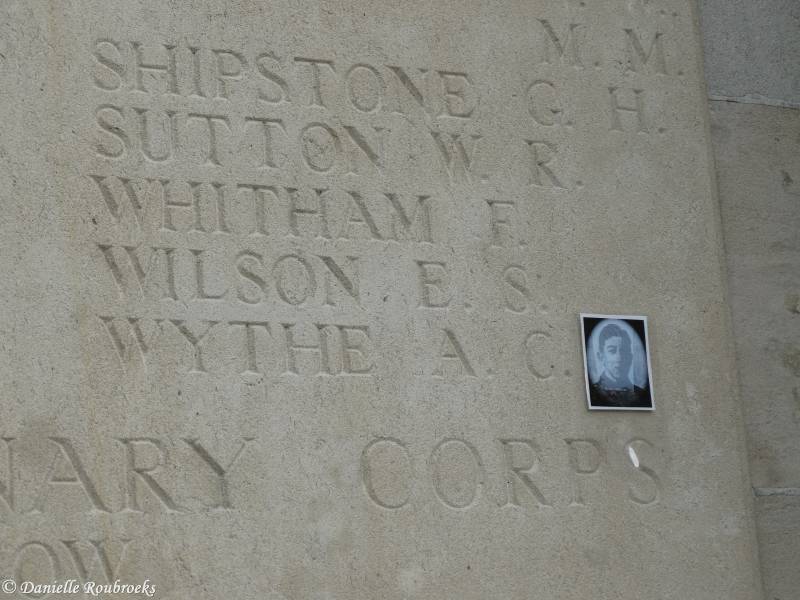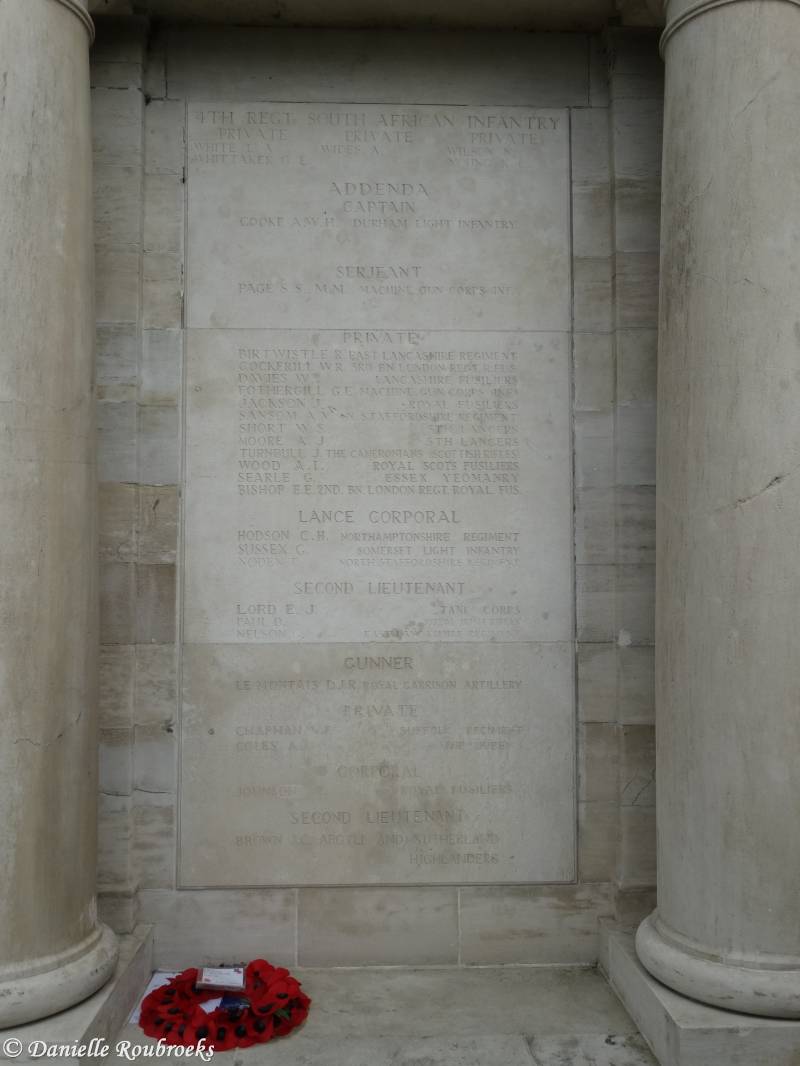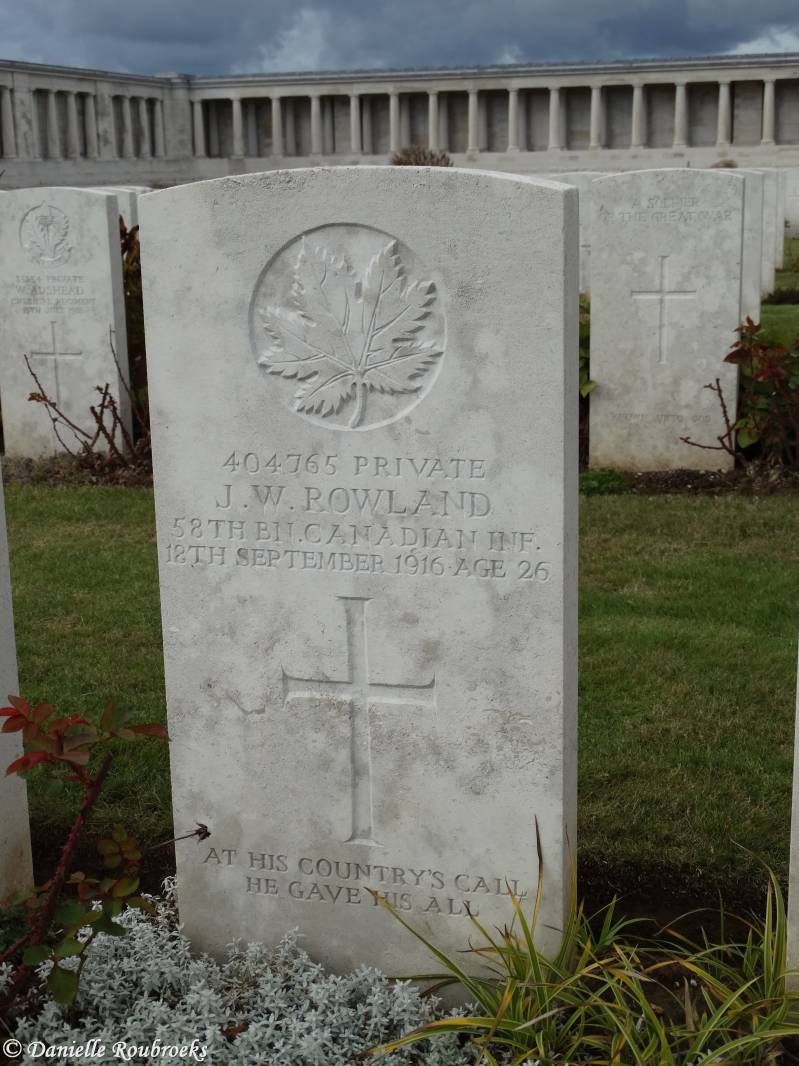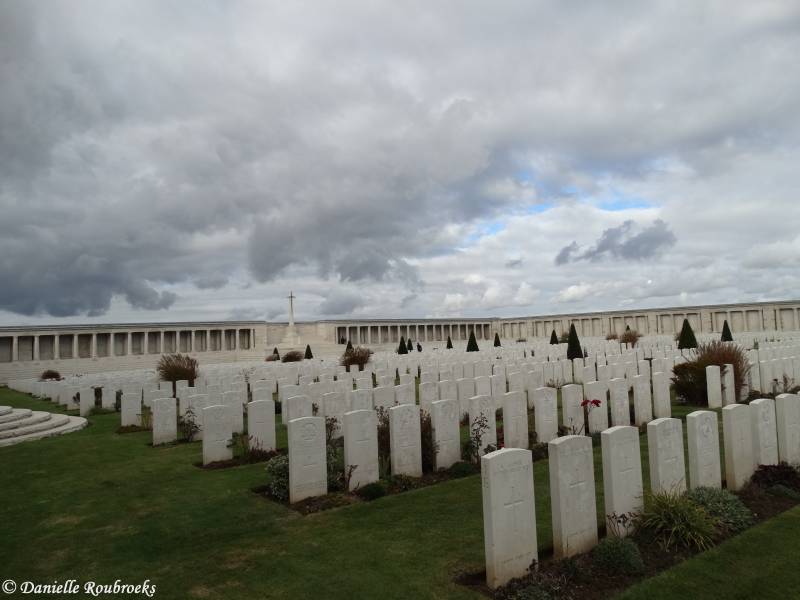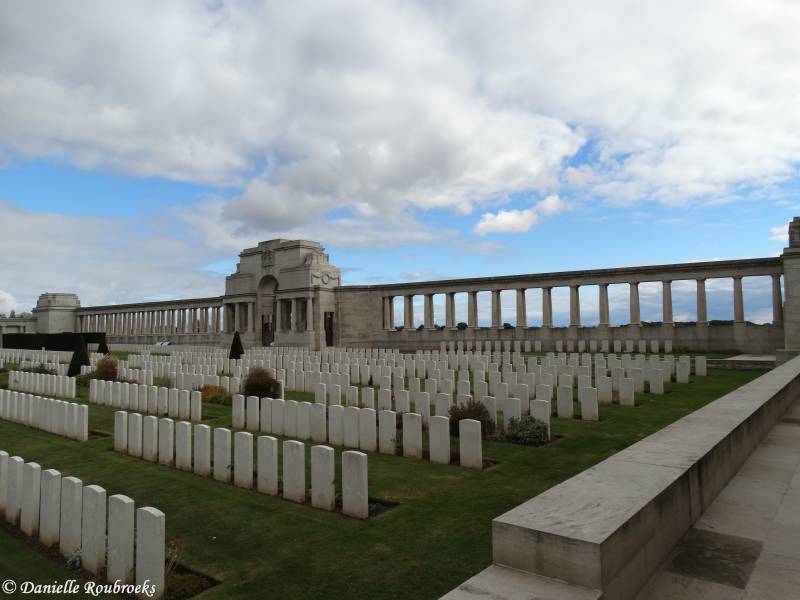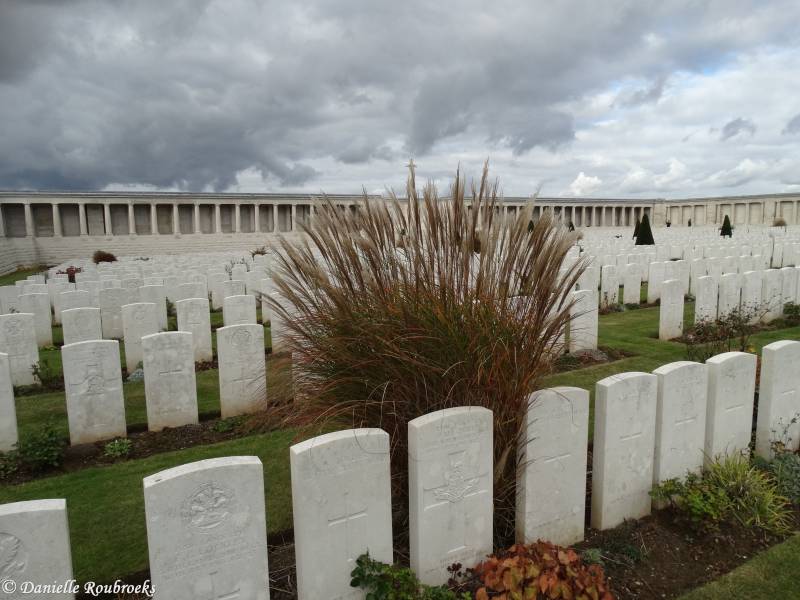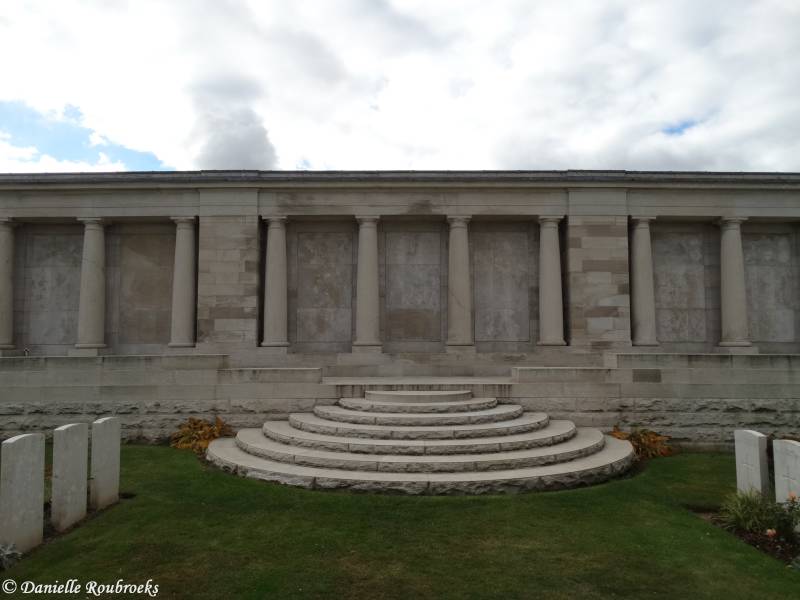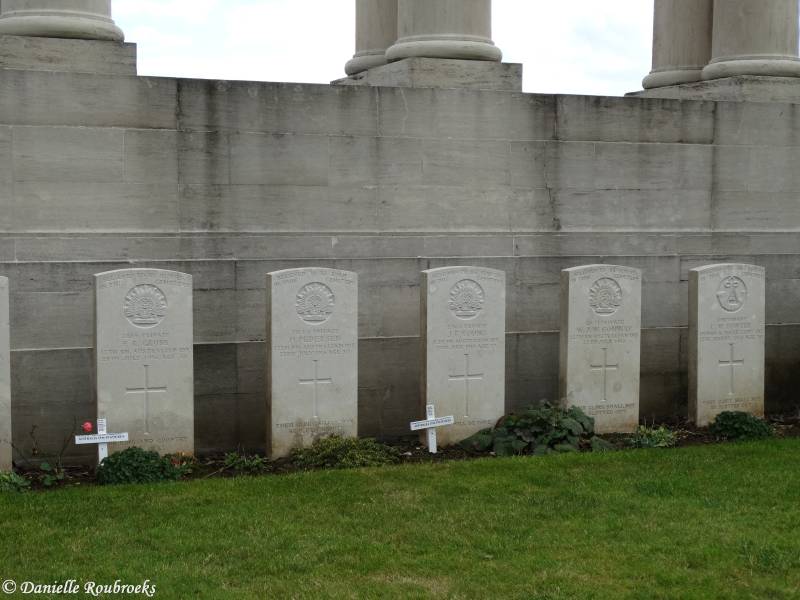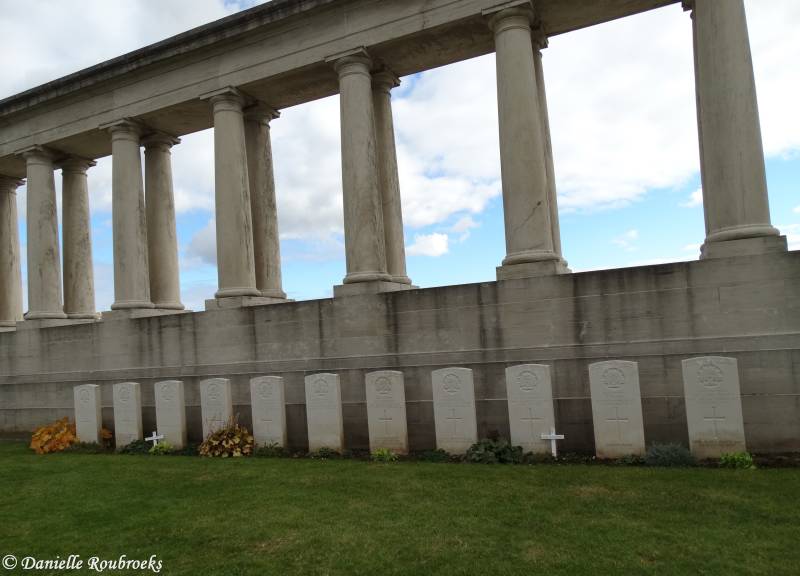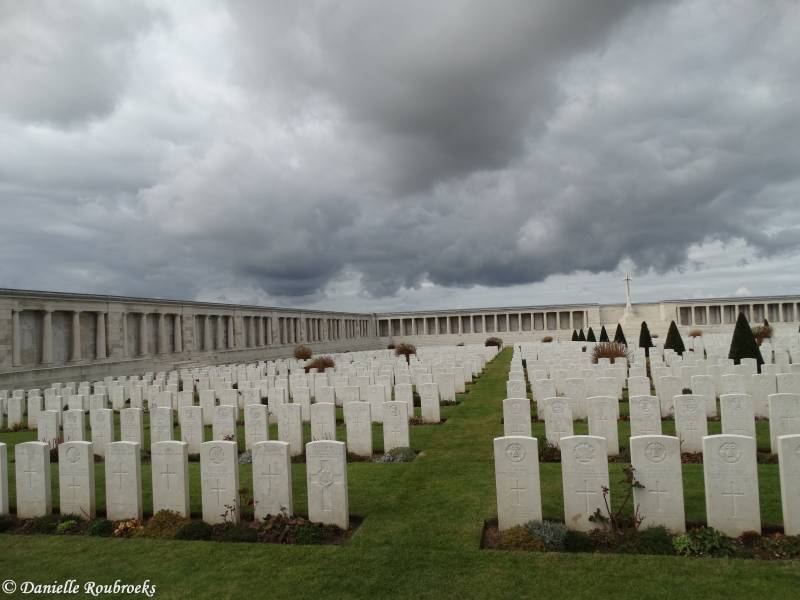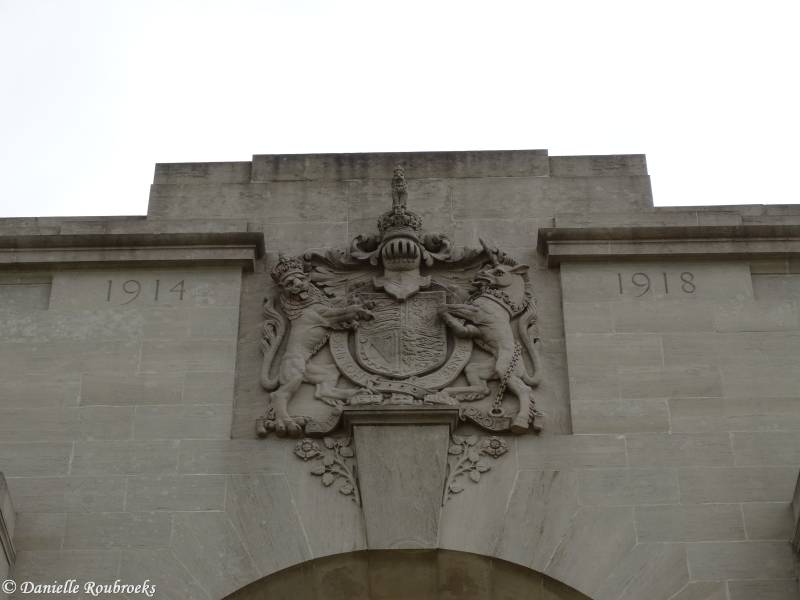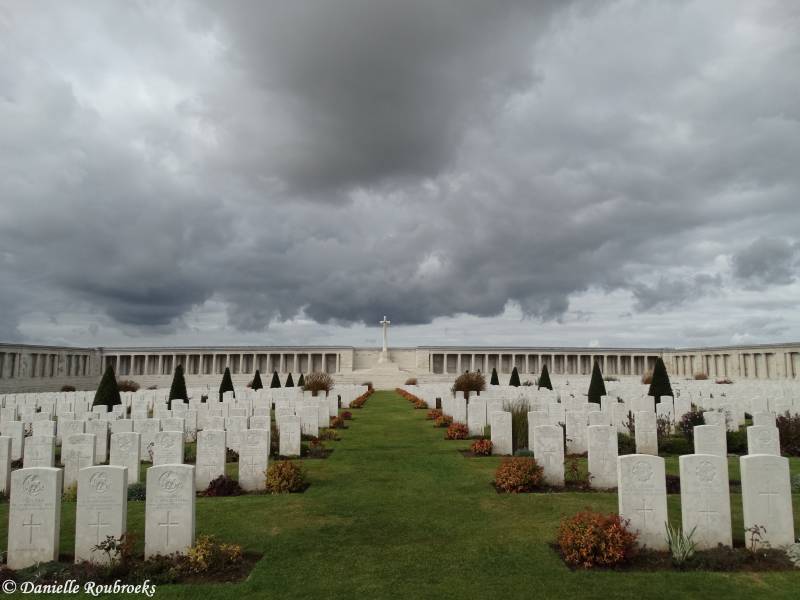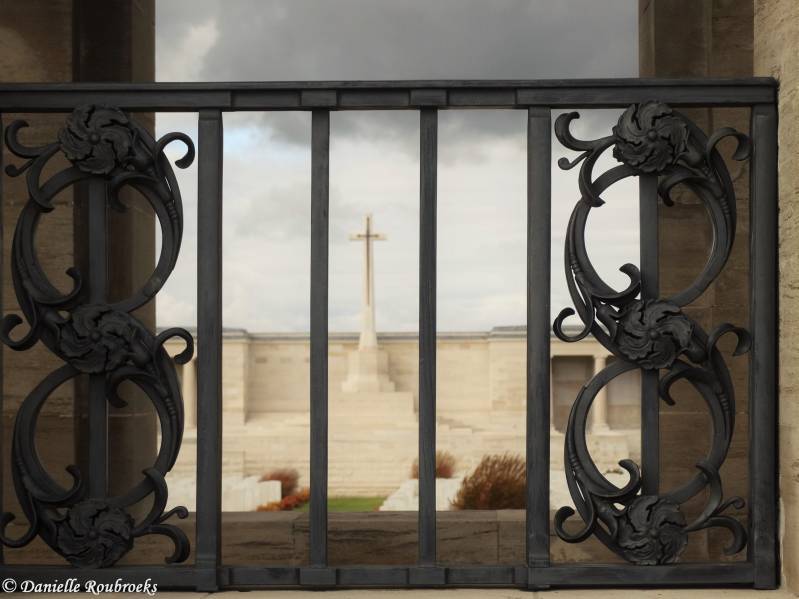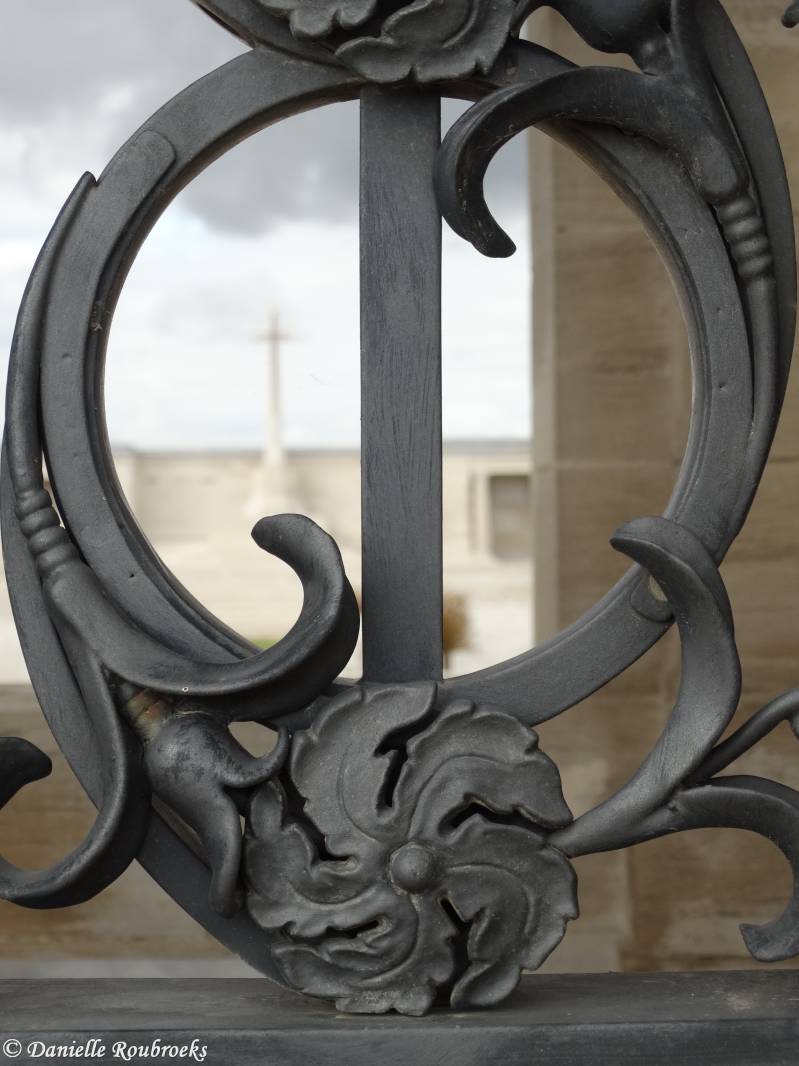Pozières British Cemetery and Memorial
Historical Information (Source: CWGC)
The village of Pozieres was attacked on 23 July 1916 by the 1st Australian and 48th (South Midland) Divisions, and was taken on the following day. It was lost on 24-25 March 1918, during the great German advance, and recaptured by the 17th Division on the following 24 August. Plot II of Pozieres British Cemetery contains the original burials of 1916, 1917 and 1918, carried out by fighting units and field ambulances. The remaining plots were made after the Armistice when graves were brought in from the battlefields immediately surrounding the cemetery, the majority of them of soldiers who died in the Autumn of 1916, but a few represent the fighting in August 1918.
There are now 2,760 Commonwealth servicemen buried or commemorated in this cemetery. 1,382 of the burials are unidentified but there are special memorials to 23 casualties known or believed to be buried among them. There is also 1 German soldier buried here. The cemetery is enclosed by the Pozieres Memorial, which relates to the period of crisis in March and April 1918 when the Allied Fifth Army was driven back by overwhelming numbers across the former Somme battlefields, and the months that followed before the Advance to Victory, which began on 8 August 1918. The cemetery and memorial were designed by W H Cowlishaw.
Served with
- United Kingdom (779)
- Australian (456)
- Canadian (151)
- German (1)
Served in
- Army (1383)
- Air Force (4)
The POZIERES MEMORIAL relates to the period of crisis in March and April 1918 when the Allied Fifth Army was driven back by overwhelming numbers across the former Somme battlefields, and the months that followed before the Advance to Victory, which began on 8 August 1918.
The Memorial commemorates over 14,000 casualties of the United Kingdom and 300 of the South African Forces who have no known grave and who died on the Somme from 21 March to 7 August 1918. The Corps and Regiments most largely represented are The Rifle Brigade with over 600 names, The Durham Light Infantry with approximately 600 names, the Machine Gun Corps with over 500, The Manchester Regiment with approximately 500 and The Royal Horse and Royal Field Artillery with over 400 names.
The cemetery and memorial were designed by W.H. Cowlishaw, with sculpture by Laurence A. Turner. The memorial was unveiled by Sir Horace Smith-Dorrien on 4 August 1930.
Served with
- United Kingdom (14396)
- South African (324)
Served in
- Army (14665)
- Navy (55)
VICTORIA CROSS
Citation
An extract from "The London Gazette", No. 29765, dated, 26th Sept., 1916, records the following:-"For most conspicuous bravery. During an attack on the enemy''s trenches the infantry was temporarily driven back by the intense machine gun fire opened by the enemy. Many wounded were left in "No Man''s Land" lying in shell holes. Serjt. Castleton went out twice in face of this intense fire and each time brought in a wounded man on his back. He went out a third time and was bringing in another wounded man when he was himself hit in the back and killed instantly. He set a splendid example of courage and self-sacrifice"
Grave Reference: IV. L. 43.
(Source: Wikipedia)
Private Herbert George COLUMBINE - 50720 - 9th Sqdn. Machine Gun Corps (Cavalry)
Died 22 March 1918 Age 24
Country of Service: United Kingdom
Awards: Victoria Cross
Citation
An extract from "The London Gazette," dated 30th April, 1918, records the following:- "For most conspicuous bravery and self-sacrifice displayed, when, owing to casualties, Pte. Columbine took over command of a gun and kept it firing from 9 a.m. till 1 p.m. in an isolated position with no wire in front. During this time wave after wave of the enemy failed to get up to him. Owing to his being attacked by a low-flying aeroplane the enemy at last gained a strong footing in the trench on either side. The position being untenable he ordered the two remaining men to get away, and, though being bombed from either side, kept his gun firing and inflicting tremendous losses. He was eventually killed by a bomb which blew up him and his gun. He showed throughout the highest valour, determination and self-sacrifice."
Grave Reference: Panel 93.
(Source: Wikipedia)
Second Lieutenant Edmund DE WIND - 15th Bn. Royal Irish Rifles
Died 21 March 1918 Age 34
Country of Service: United Kingdom
Awards: Victoria Cross
Citation
An extract from "The London Gazette," dated 13th May, 1919, records the following:- "For most conspicuous bravery and self-sacrifice on the 21st March, 1918, at the Race Course Redoubt, near Grugies. For seven hours he held this most important post, and though twice wounded and practically single-handed, he maintained his position until another section could be got to his help. On two occasions, with two N.C.O.'s only, he got out on top under heavy machine gun and rifle fire, and cleared the enemy out of the trench, killing many. He continued to repel attack after attack until he was mortally wounded and collapsed. His valour, self-sacrifice and example were of the highest order."
Grave Reference: Panel 74.
(Source: Wikipedia)
Lieutenant Colonel Wilfrith ELSTOB - 16th Bn. Manchester Regiment
Died 21 March 1918 Age 29
Country of Service: United Kingdom
Awards: Victoria Cross, Distinguished Service Order, Military Cross
Citation
An extract from the "London Gazette", dated 6th June, 1919, records the following:- "For most conspicuous bravery, devotion to duty and self-sacrifice during operations at Manchester Redoubt, near St. Quentin, on the 21st March, 1918. During the preliminary bombardment he encouraged his men in the posts in the Redoubt by frequent visits, and when repeated attacks developed controlled the defence at the points threatened, giving personal support with revolver, rifle and bombs. Single-handed he repulsed one bombing assault driving back the enemy and inflicting severe casualties. Later, when ammunition was required, he made several journeys under severe fire in order to replenish the supply. Throughout the day Lieutenant-Colonel Elstob, although twice wounded, showed the most fearless disregard of his own safety, and by his encouragement and noble example inspired his command to the fullest degree. The Manchester Redoubt was surrounded in the first wave of the enemy attack, but by means of the buried cable Lieutenant-Colonel Elstob was able to assure his Brigade Commander that "The Manchester Regiment will defend Manchester Hill to the last." Sometime after this post was overcome by vastly superior forces, and this very gallant officer was killed in the final assault, having maintained to the end the duty which he had impressed on his men - namely, "Here we fight, and here we die." He set throughout the highest example of valour, determination, endurance and fine soldierly bearing."
Grave Reference: Panel 64.
(Source: Wikipedia)


